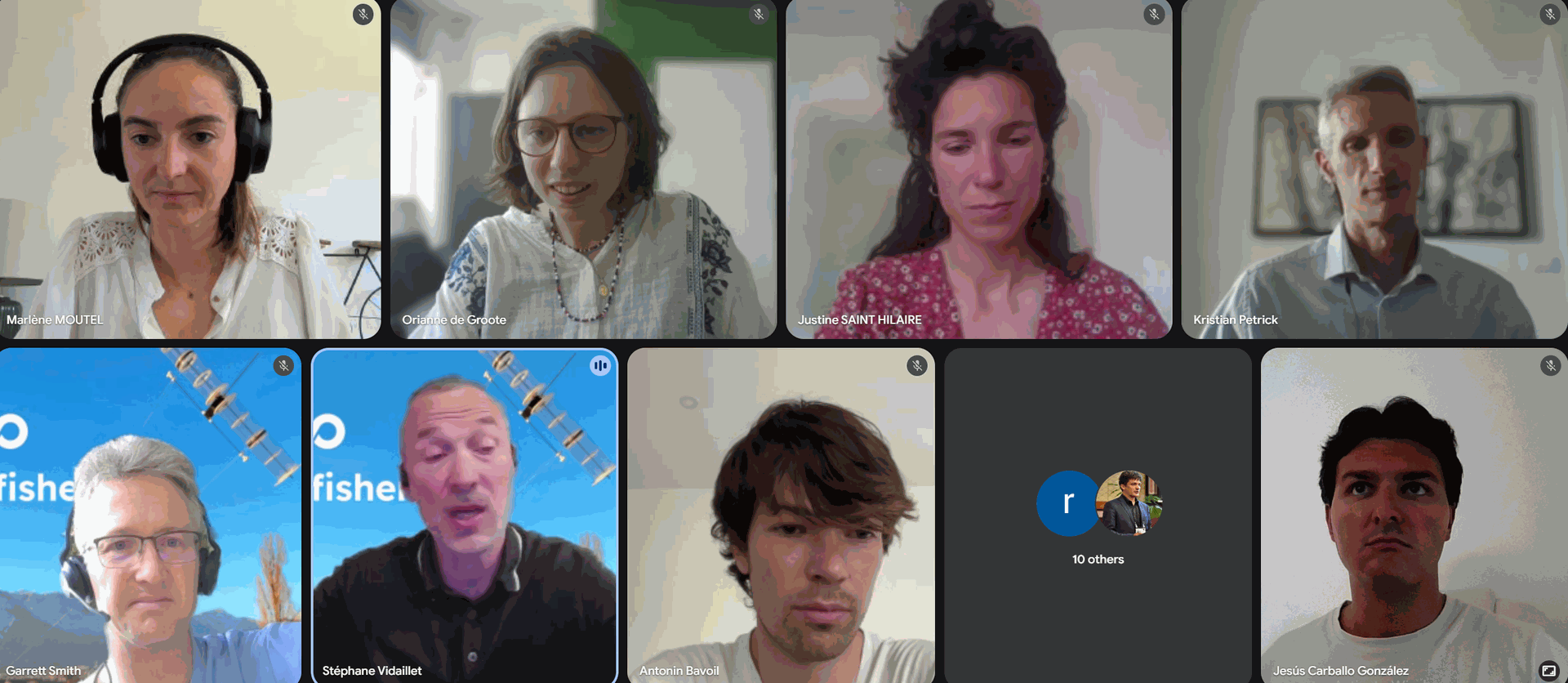On June 23, 2025, a French-language webinar gathered 20 participants to explore the growing field of Airborne Wind Energy, its opportunities in France, and present the progress of the European DEM-AWE project, featuring the third edition in this series within the consortium. Organised by Laminak Energy, the session featured speakers from the host, alongside Airborne Wind Europe and Kitepower, highlighting the technology’s potential for clean and material-efficient energy generation.
Kristian Petrick, from Airborne Wind Europe, kicked off the session introducing the principles of this innovative solution along with the advantages and benefits of using flying wings tethered to the ground to generate electricity. “Airborne Wind Energy can reduce material use by up to 90% compared to conventional wind” he highlighted. In addition, a video demonstration showed how the systems fly crosswind to capture the strong, and steady winds found at higher altitudes.
“In France, high-altitude wind offers a major opportunity,” Petrick noted, with wind speeds 1.5 to 2 times higher than at 100 metres. This enables higher capacity factors and makes AWE a strong candidate for integration into national energy strategies.

Then, Justine Saint Hilaire, from Laminak Energy, presented the DEM-AWE project, which aims to validate a 30 kW AWE pilot system connected to a 400-kWh battery, the K-BESS system, currently operating in Bangor Erris, Ireland. The project also includes a market study in Northwest Europe and outreach activities to boost awareness and policy integration.
Orianne de Groote, from Kitepower, shared early operational results highlighting 170 flights in Ireland since September 2023. The semi-automated system can launch in under an hour and land in 15 minutes. “We’re also building local capacity,” she added, referring to the training of four local operators and educational pathways offered via the Kitepower Academy.
A second pilot project launched in the Netherlands in early 2025 supports a construction site by generating electricity just 1 km from operations.
To conclude the round of presentations, Marlène Moutel, from Laminak Energy, unveiled the French GIS-based study, identifying over 55,000 potential AWE sites across France, based on a tether length of 425 metres. The potential varies depending on the cable span, and additional assessments were presented and will be officially published soon.
During the Q&A session, participants also heard from WindFisher, a France-based Airborne Wind Energy developer, who shared insights into their system and answered technical questions.